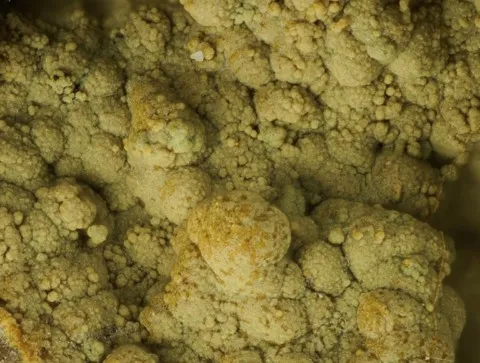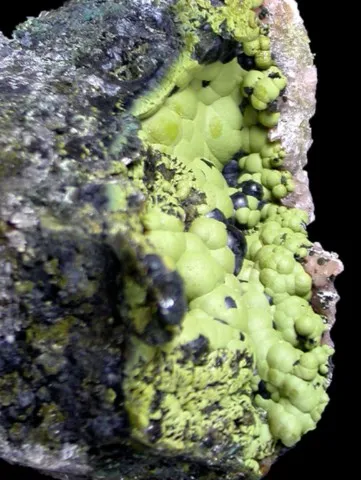MITRIDATITE
Class : Phosphates, arsenates, vanadates
Subclass : Hydrated phosphates
Crystal system : Monoclinic
Chemistry : Ca2Fe3O2(PO4)3 3H2O
Rarity : Uncommon
Mitridatite is a secondary phosphate formed by meteoric alteration of primary iron-bearing phosphates (triphylite, lithiophilite, vivianite). It is found in coatings or encrustations in pegmatites, in oolitic phosphate iron ores, sometimes in phosphate soils. Its name comes from its location of discovery : the Mithridat Mountains (Crimea, Ukraine). Mitridatite rarely occurs in tabular crystals of 2 mm maximum. It is much more common in masses, nodules and veinlets. Its color is variable with a dominant of dark greens, passing to green-yellow in the fine-grained aggregates.
Main photo : Mitridatite from Cigana claim, Barra do Cuieté, Minas Gerais, Brazil © Sergio Varvello
Mitridatite in the World

Twinning
Twins are known by rotation perpendicular to {100}.
Fakes and treatments
No fakes recorded for this mineral species.
Hardness : 2.5
Density : 3.25
Fracture : Irregular
Streak : Light green
TP : Translucent to opaque
RI : 1.785 to 1.850
Birefringence : 0.065
Optical character : Biaxial -
Pleochroism : None
Fluorescence : None
Solubility : Acids
Magnetism : NoneRadioactivity : None

